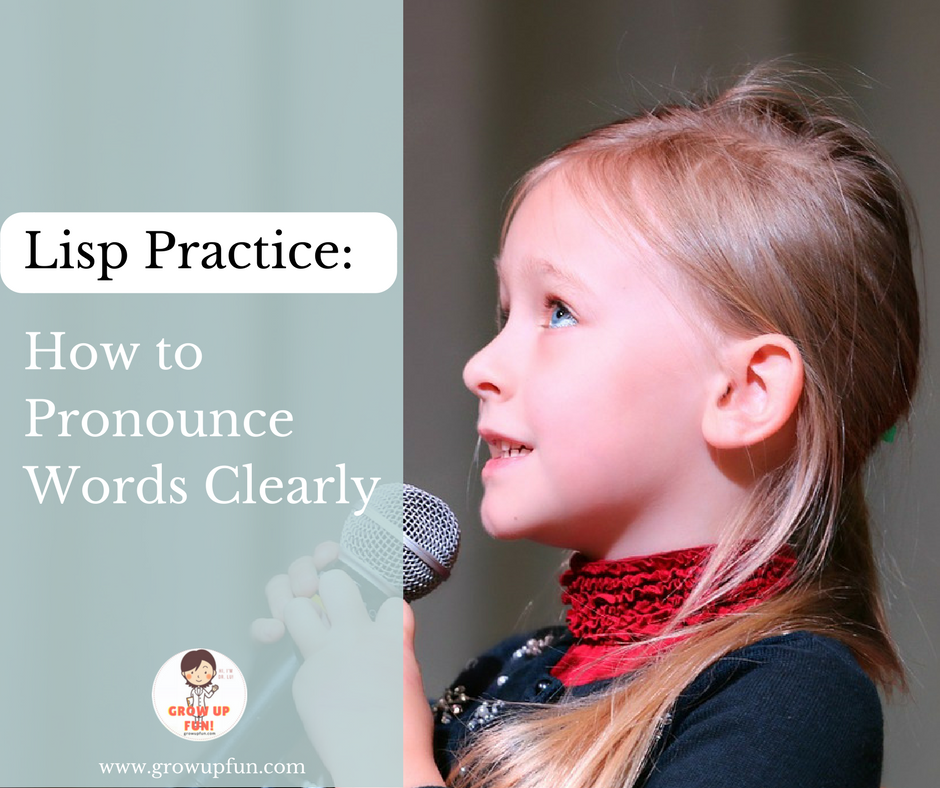A lisp is a Functional Speech Disorder (FSD), or difficulty in learning to make a specific speech sound or sounds. The term “lisp” itself is a lay term, and is not something that most speech pathologists use. A lisp is characterized by difficulty in saying the sounds /s/ and /z/. You know,
“She thells thea thells on the thea thore.”
Not known to many, this disorder can actually be corrected at home using do-it-yourself daily exercises. Most often than not, speech disorders are caused by anxiety or being nervous. These tips are not only for children but for adults as well.
Part I. Saying the Sounds Using a Mirror
- Look in the mirror. Open your lips like you’re smiling. When you begin saying the sounds, you’ll want to keep your lips open like this to be able to see your teeth the whole time.
- Close your teeth and line them up. Line up your teeth so that the bottom row rests just below the top row, touching them lightly. Hold them together like this. If you have a natural slight over-bite when you smile (many people do) you’ll need to shift your bottom jaw forward a little bit to get your teeth in the right position. It may no longer look like a genuine smile in the mirror, but that’s okay.
- Get your tongue in the right position. Keep your tongue back away from your teeth. It should be sort of in the center of your mouth, slightly pulled back and just behind the upper teeth. You don’t want it to be locked to the roof of your mouth; otherwise the air won’t be able to come through to make the sounds.
- Practice the sounds. Practice saying /s/, as though you’re hissing like a snake.
- To do this, blow air through your teeth while they are lined up as explained above, being sure to keep your tongue back away from the teeth. Do this several times, until it sounds like a clear /s/ sound. To practice /z/, you keep your teeth and tongue in the same position, but you “turn your motor on” as a speech therapist would say. This means you vocalize a sound in your throat instead of just blowing silent air.
- Ask a trusted friend or relative for their feedback. After you’ve tried this method, a good way to check and make sure you’re making the right sound is to ask someone. Ask someone who doesn’t speak with a lisp, who will genuinely want to help and won’t make fun. They should be able to tell you if the sounds you’re making sound like clear /s/ and /z/ sounds. Ask them to make the sounds too, and try to copy what they do. Watch their mouths and teeth, and try doing the same thing in the mirror.
Part II. Practicing Vocalization Exercises
- Start with just the sounds. You’ll need to work up to saying the sounds correctly while speaking naturally. Practice saying just the /s/ and /z/ sounds to yourself, and continue using the mirror and someone else for feedback. The more you practice, the faster you’ll be able to say the sounds clearly while speaking sentences.
- Increase your speed gradually. For each step in this section, you’ll want to begin slowly and once you’re comfortable saying the sounds correctly, you can start doing each step faster. Soon you’ll be saying the sounds clearly at a natural pace.
- Try syllables and words. Practice saying the sounds with syllables first. Try the following:
| saa | Zaa |
| see | Zee |
| soo | Zoo |
| Sie | Zie |
| sor | zor |
Repeat these gradually and then quickly, trying to maintain the correct sounds for /s/ and /z/. Next practice words:
| Sun | Sue | Saw | Sip | Silly | Seals | Bizarre |
| Soup | Sigh | see | soap | seven | zoo | zippers |
- Practice sentences. Try repeating sentences containing the sounds /s/ and /z/. For instance, “I see a sock,” and “We saw the store.” Here are some more you can try:
- The striped zebra made me sneeze.
- I eat spaghetti with a spoon.
- He laughs when using scissors.
- Repeat tongue twisters. Once you’re able to say sentences using clear /s/ and /z/ sounds pretty easily and quickly, try some tongue twisters:
- Sister Suzie sat on the sea shore sewing shirts for sailors.
- The shrewd shrew sold Sarah seven silver fish slices.
- Keep practicing. Changing how you’ve been speaking can take quite a bit of work. Don’t give up if you don’t see results right away. Practice the techniques for at least 20 minutes every day. Ask your friends and family for feedback on whether or not they think you are improving your pronunciation during conversations.
Note: Children in school often participate in speech therapy for months or even years to improve their lisps. If you’re not finding any improvement in a couple of months, try contacting a speech therapist for more help.
This guide is taken online and is not meant to 100% correct your child’s Lisp disorder. Seek help from a speech therapist if your child still is having trouble pronouncing the sounds clearly. Despite the many efforts, if your child is still lisping, accept and encourage them. How they talk is what makes them who they are, after all.
